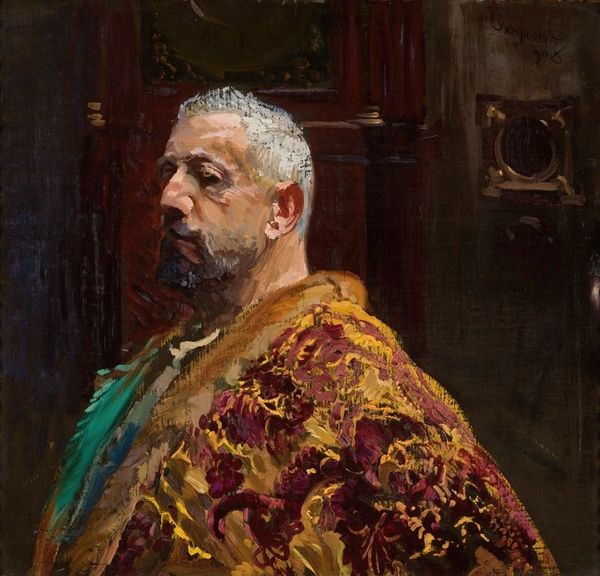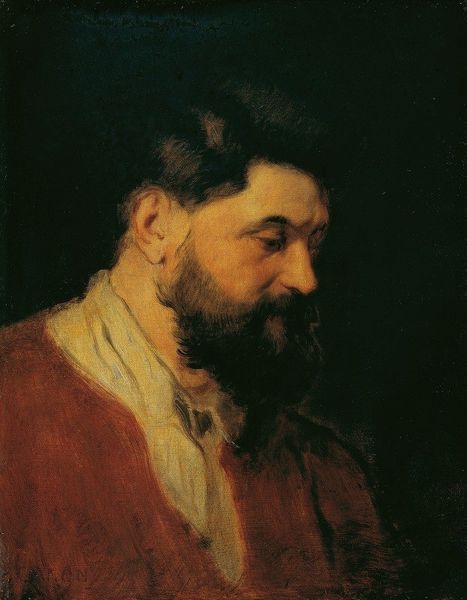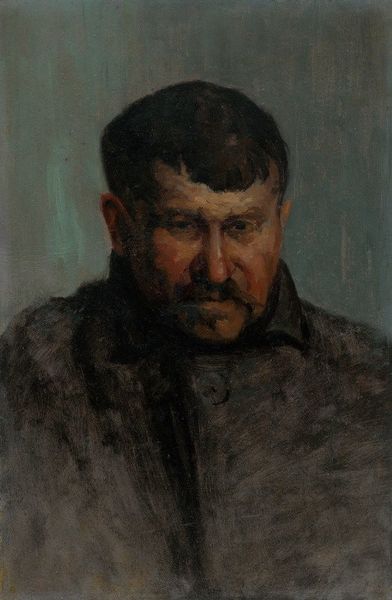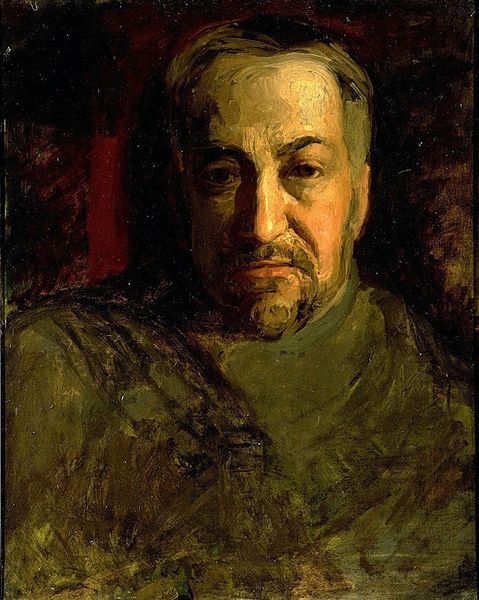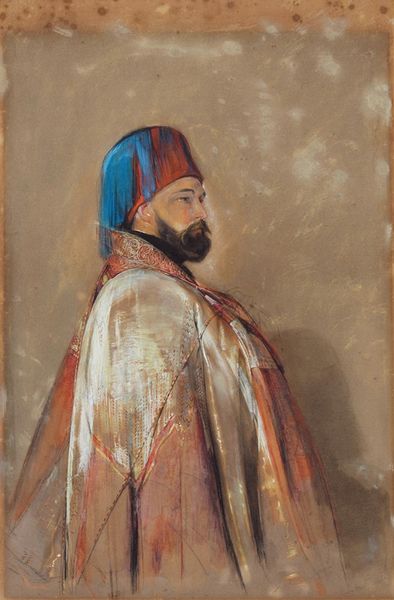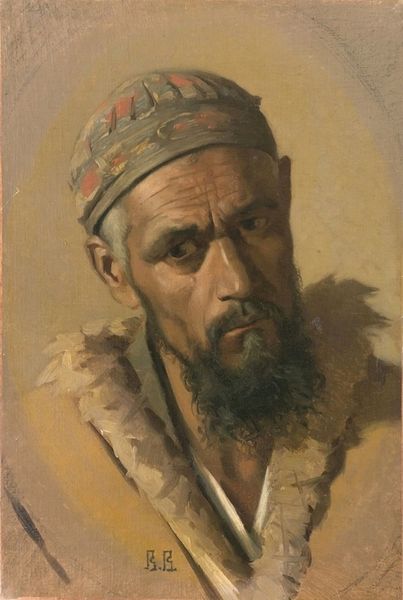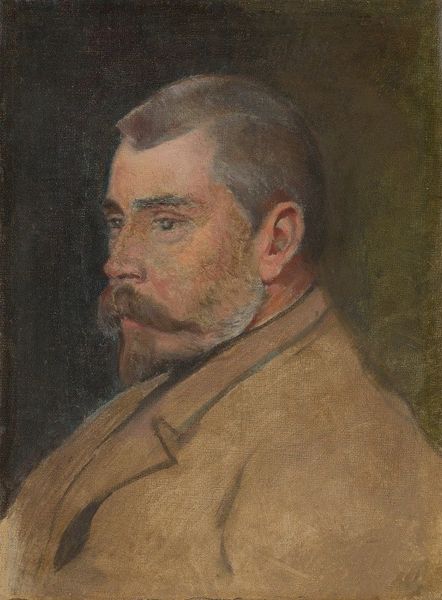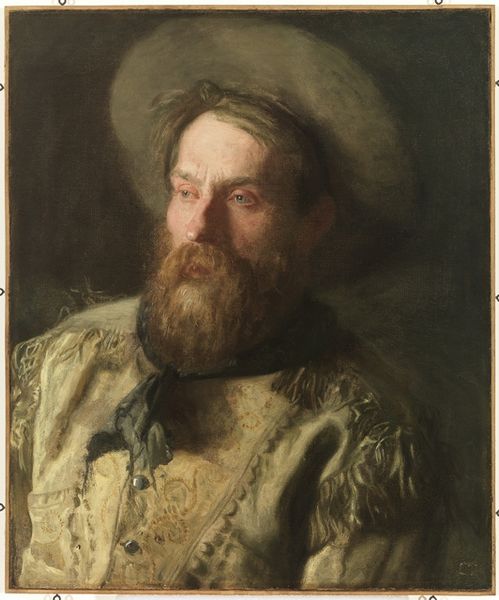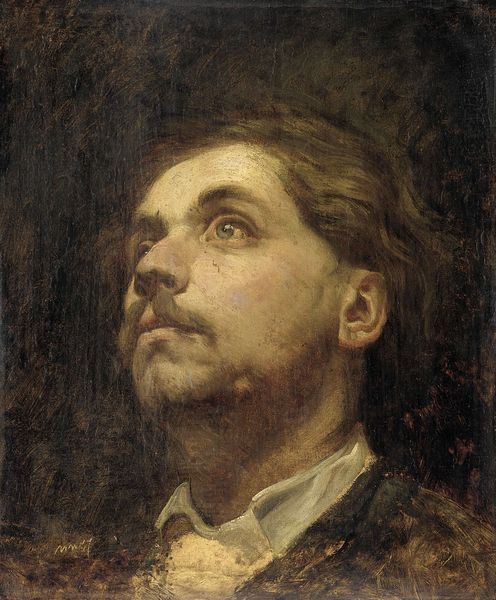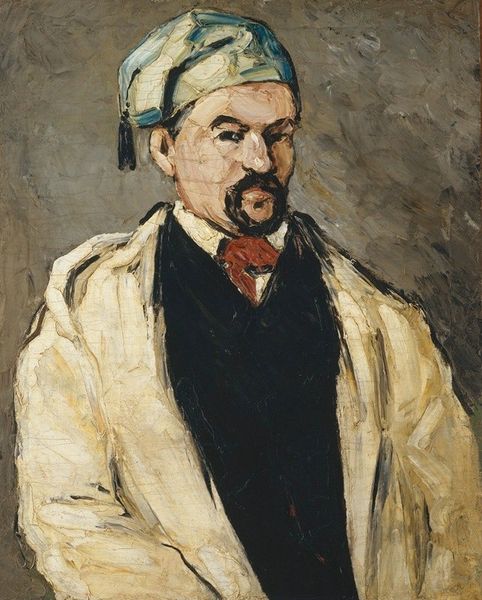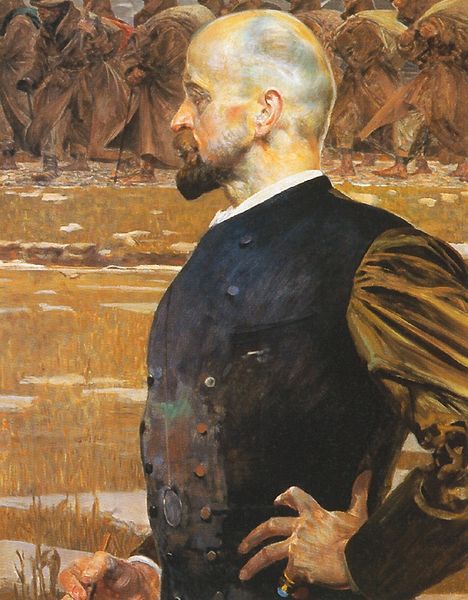
painting, oil-paint, impasto
#
portrait
#
painting
#
oil-paint
#
oil painting
#
impasto
#
modernism
#
realism
Dimensions: 75.5 x 80 cm
Copyright: Public domain
Editor: Here we have Leon Wyczółkowski’s "Portrait of Erazm Barącz," an oil painting created in 1909. I’m immediately drawn to the subject's intense gaze and the almost regal appearance created by the textures of his garment. How do you interpret this work, considering its historical context? Curator: Well, let’s unpack that 'regal appearance' you noticed. It’s key to understanding how Wyczółkowski engages with societal power structures through portraiture. Think about the socio-political landscape of early 20th-century Poland, partitioned and yearning for autonomy. Does this portrait subtly reflect the Polish gentry’s anxieties, their attempts to retain cultural prominence even as their political influence waned? Consider the deliberate detail in the subject’s clothing; does it portray a proud tradition on the verge of extinction? Editor: That's fascinating. I hadn’t considered the political implications of the portrait in that light. It makes me think about how artists were portraying national identity at the time. Curator: Exactly! And it's also important to consider that the art world was becoming more formalized in Poland during that period, and portraits were a major form of recognition. Were portraits like this used to perpetuate a sense of hierarchy, and project privilege? Editor: It’s like he’s capturing more than just a likeness; he's showing us the complexities of Polish identity at the turn of the century. Curator: Precisely. Wyczółkowski doesn't merely depict an individual; he frames him within a specific cultural and political narrative. We can read this as both a celebration and a critical examination of Polish society. What have you learned about how art intersects with politics? Editor: That's definitely changed how I see the painting –it's not just about a man, but a statement about a changing nation and class. Thank you. Curator: Indeed. Remember that every brushstroke can tell a story of power, identity, and the intricate relationship between art and society.
Comments
No comments
Be the first to comment and join the conversation on the ultimate creative platform.
